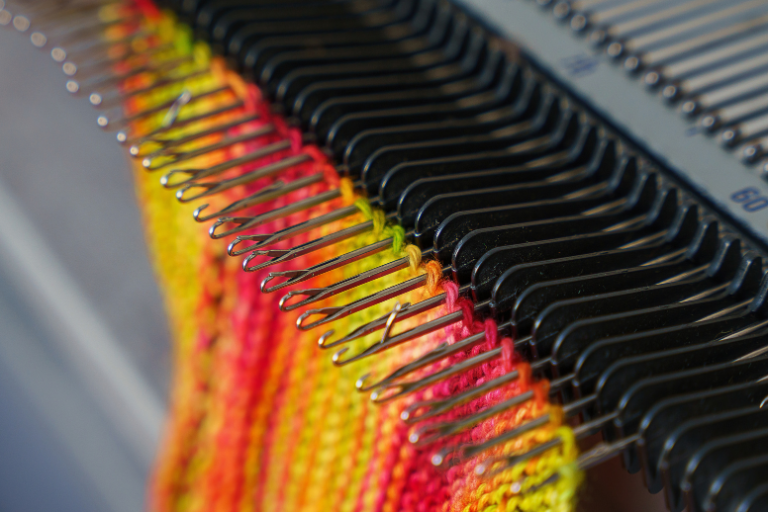The art of crochet has long been celebrated as a handcrafted skill, with individuals meticulously creating intricate patterns and designs using a simple hook and yarn. However, in the era of technological advancement, the question arises: Can crochet be done by a machine? In this exploration, we'll delve into the possibilities, challenges, and the current state of machine-based crochet to understand the intersection of tradition and technology.
Traditional Crochet vs. Machine Crochet
Traditional crochet is a handcrafting technique that involves creating fabric by interlocking loops of yarn using a crochet hook. This process allows for a high level of creativity and individuality, as each piece is a unique creation of the crafter's skill and imagination. The human touch, the feel of the yarn, and the rhythmic movement of the hook contribute to the charm of handmade crochet items.
On the other hand, machine crochet involves the use of automated equipment to replicate the actions of a human crocheter. These machines use programmed instructions to manipulate the yarn and produce crocheted fabric at a much faster pace than manual methods. While the speed and efficiency of machine crochet are appealing, the challenge lies in replicating the nuanced artistry and personal touch of handcrafted pieces.
Challenges in Machine Crochet
Several challenges arise when attempting to automate the crochet process. Unlike other textile manufacturing methods, such as weaving or knitting, crochet involves a more complex interplay of loops and stitches. The adaptability and creativity inherent in traditional crochet pose difficulties for machines, which struggle to replicate the fine motor skills and intuitive decision-making of a skilled human crocheter.
One significant challenge is the intricate nature of crochet patterns. Handcrafted crochet often features unique stitches, textures, and designs that may not follow a predictable or standardized pattern. Translating this diversity into machine instructions requires advanced programming and technology, pushing the boundaries of what is currently achievable.
Moreover, the tactile aspect of crochet poses a challenge for machines. Humans use touch and feel to navigate the tension and drape of the yarn, adjusting their technique accordingly. Teaching a machine to replicate this sensitivity is a complex task, as it involves not only visual recognition but also a level of tactile understanding that current technology struggles to achieve.
Current State of Machine Crochet
While fully automated crochet machines that can match the creativity of human crafters remain elusive, there have been notable advancements in the realm of machine crochet. Some textile manufacturers employ machines that can produce basic crochet stitches and simple patterns at a faster pace than manual crafting.
These machines often operate on a larger scale, creating consistent and repetitive designs suitable for mass production. Applications include the production of blankets, scarves, and other items where intricate details are less critical. However, the complexity of more elaborate crochet projects, such as lacework or intricate motifs, still poses a significant challenge for automation.
In recent years, there have been experiments with combining computer-assisted design (CAD) software and robotic arms to simulate crochet-like movements. These systems allow for greater precision and control, but they still lack the spontaneity and creativity inherent in the human crochet process.
The Future of Machine Crochet
As technology continues to advance, the future of machine crochet holds promise, but the path forward is not without obstacles. Researchers and engineers are exploring artificial intelligence (AI) and machine learning to enhance the capabilities of crochet machines. These technologies aim to teach machines not only to replicate existing crochet patterns but also to generate new designs based on learned principles.
In the coming years, we may witness the development of machines that can adapt to different yarn types, adjust tension dynamically, and even introduce innovative stitches and patterns. However, achieving a perfect emulation of the intricate and artistic aspects of handcrafted crochet remains a formidable challenge.
Balancing Tradition and Technology
The debate over machine crochet raises questions about the impact on the traditional handcrafting community. While automation could lead to increased efficiency and accessibility, it may also be viewed as a potential threat to the authenticity and uniqueness associated with handmade crochet.
Machine crochet, if and when it becomes more widespread, could coexist with traditional methods, each serving different purposes. Handcrafted crochet would continue to thrive as a form of artistic expression and personal connection, while machine crochet might find its place in large-scale manufacturing and industries where speed and consistency are paramount.
Ultimately, the future relationship between crochet and machines will likely involve a delicate balance between embracing technological advancements and preserving the cherished traditions of the craft. Whether crafted by hand or by machine, the beauty of crochet lies in its ability to create intricate and charming textiles that bring joy and warmth to those who appreciate the artistry behind each piece.
